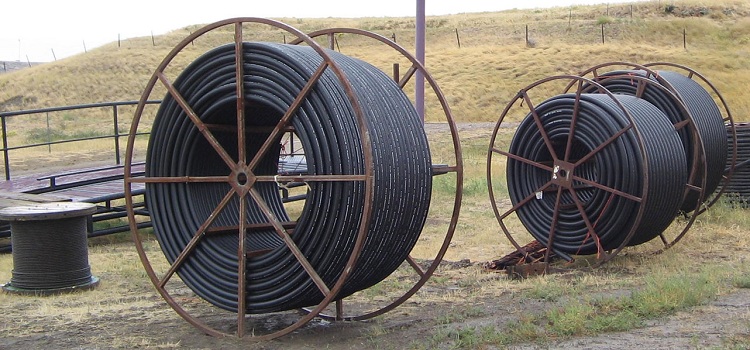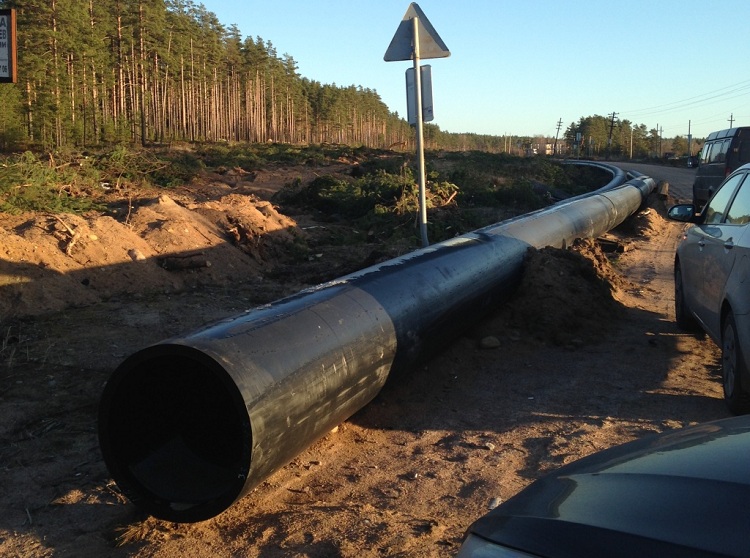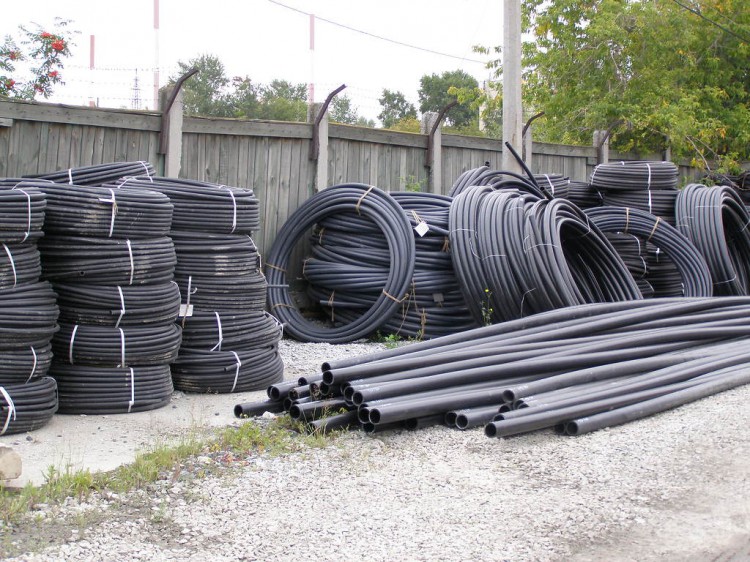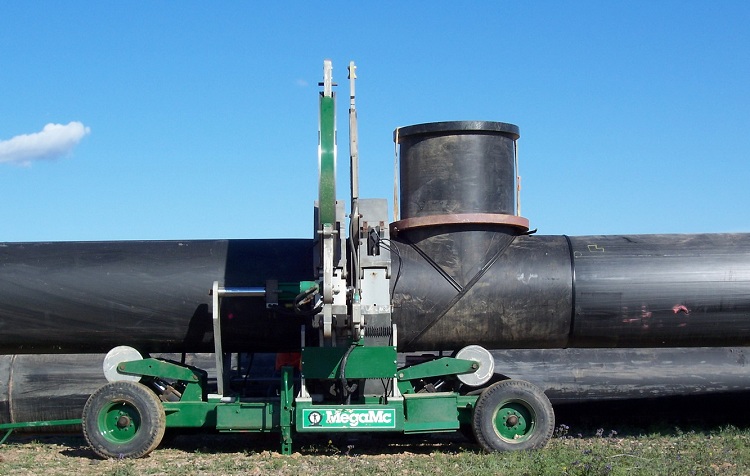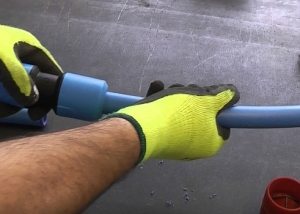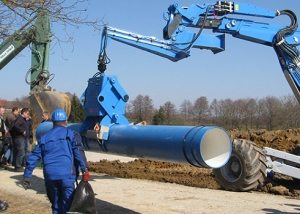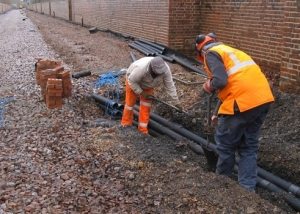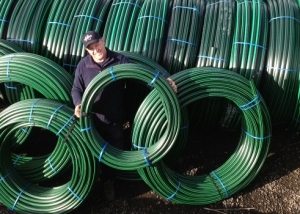Technical pipe is made from waste and secondary raw materials of low pressure polyethylene. It is used for pressure-free or low-pressure transportation of bulk solids, the quality of which does not matter the conditions of movement. It is also used for arranging drainage and autonomous sewer systems, as a protective sheath for laying cables for various purposes.
Content
Production and properties of technical PE products
Technical polyethylene products are produced from recycled materials, using the waste generated during the production of polyethylene grades 33, 60 and 80, and recycled recycled materials. The low cost of raw materials determines the corresponding cost of the final product, which is extremely attractive to consumers. Some of the properties of technical PE products that distinguish them from ordinary ones follow from the production features:
- the composition of the material may be heterogeneous;
- the presence of foreign inclusions of different colors and shapes is allowed;
- minor defects observed during visual inspection are possible.
The listed disadvantages affect the cost of technical PE products. It is even lower than conventional products made from low pressure polyethylene. However, other basic properties are almost identical to conventional products.
Important! The ban on the use of technical polyethylene in domestic water supply is not related to its chemical composition. It follows from the lack of appropriate sanitary standards. The production of PE products is regulated not by GOST, but by technical conditions.
Classification and characteristics of technical pipes made of low pressure polyethylene
The PND technical pipe is produced with a diameter of 16 mm to 225 mm and a wall thickness of 2 mm to 20.5 mm in five-hundred-meter coils or in lengths. The thickness of the walls of the product is distinguished as:
- lungs (L);
- medium-light (SL);
- lightweight medium (OS);
- medium (C);
- moderately severe (CT);
- heavy (T).
When selecting PE technical products for use, the main characteristic is the SDR value, which expresses the ratio of diameter to wall thickness. A lower SDR value means the ability to withstand more pressure from the medium.
Technical characteristics of a product made of technical polyethylene coincide with those characteristic of ordinary:
- possesses dielectric properties;
- inertness with respect to most active biological and chemical environments;
- resistance to corrosion;
- the introduction of special additives provided resistance to ultraviolet radiation;
- shows tensile strength, elongating 3.5 times or more;
- high throughput due to low roughness coefficient (less than 0.1);
- easy. A cubic meter of industrial polyethylene weighs about 850 kg;
- copes with lowering the temperature to -50º C;
- begins to deform at a temperature of 80º C, to melt - at 130º C.
Technical pipes are stored in warehouses (no closer than one meter to heating devices) or in the open air (covered with an awning) laid on a flat surface. On a pallet should be stacked no more than four tiers. The stack should not exceed one and a half meters in height.
Connection of technical PE pipes
Light and durable products of small diameter are produced in bays up to five hundred meters long. This greatly simplifies the assembly of structures and for the better affects their strength. Several docking methods are possible. The choice in favor of one of them is determined by the nature of the design and installation conditions.
- With compression fittings. The most common type of detachable connection of technical pipes, attractive simplicity, reliability and low cost.
- Flange connection. Flange fittings are welded onto the ends of the pipes, the separation is not difficult.
- Butt welding. When connecting products of small diameter, a special soldering iron with a plate of the heating element is required. Heated pipes, they are docked manually. In some cases, when the quality of the connection can be neglected to some extent, the ends are heated even with a conventional burner. Butt welding of large diameter pipes requires the use of special equipment.
- Welding with an electric spiral coupling. This type of connection is recognized as the most reliable. The spiral built into the polyethylene fitting is heated to the required temperature with a special device, which creates the necessary pressure after that.
- Diffusion welding. You will need to change the settings of the soldering iron, as they are set up to work with polypropylene products, which are characterized by a higher melting point.
Use of technical PE products
Polyethylene products made from production waste and recycled raw materials retained the high quality of the base material. Moreover, their cost was significantly lower than that of an already inexpensive polyethylene product. Therefore, technical pipes were in demand in various fields of human activity:
- in industrial construction;
- when laying water supply, drainage, irrigation, drip irrigation, sewage, land reclamation;
- in pipelines intended for transportation of technical liquids and gas (at low and medium pressure);
- in ventilation systems;
- in engineering and telecommunications systems.
Technical pipes of black color, made of low pressure polyethylene, can be used both outdoors and underground. They are able to withstand significant soil pressure, never shift at the joints and are not afraid of moisture or the effects of natural active substances. When laying utility networks, electrical wiring and other cables, they are laid in concrete and brick walls, in raised floors, behind gypsum boards.
Note! It is prohibited to lay high voltage cables in polyethylene pipes, since this material is combustible.
The simplicity of assembling any design from technical pipes, excellent technical characteristics, low cost and incredible durability (at least fifty years, and possibly even up to a hundred!) Ensure their demand and wide distribution in various sectors of economic activity.
